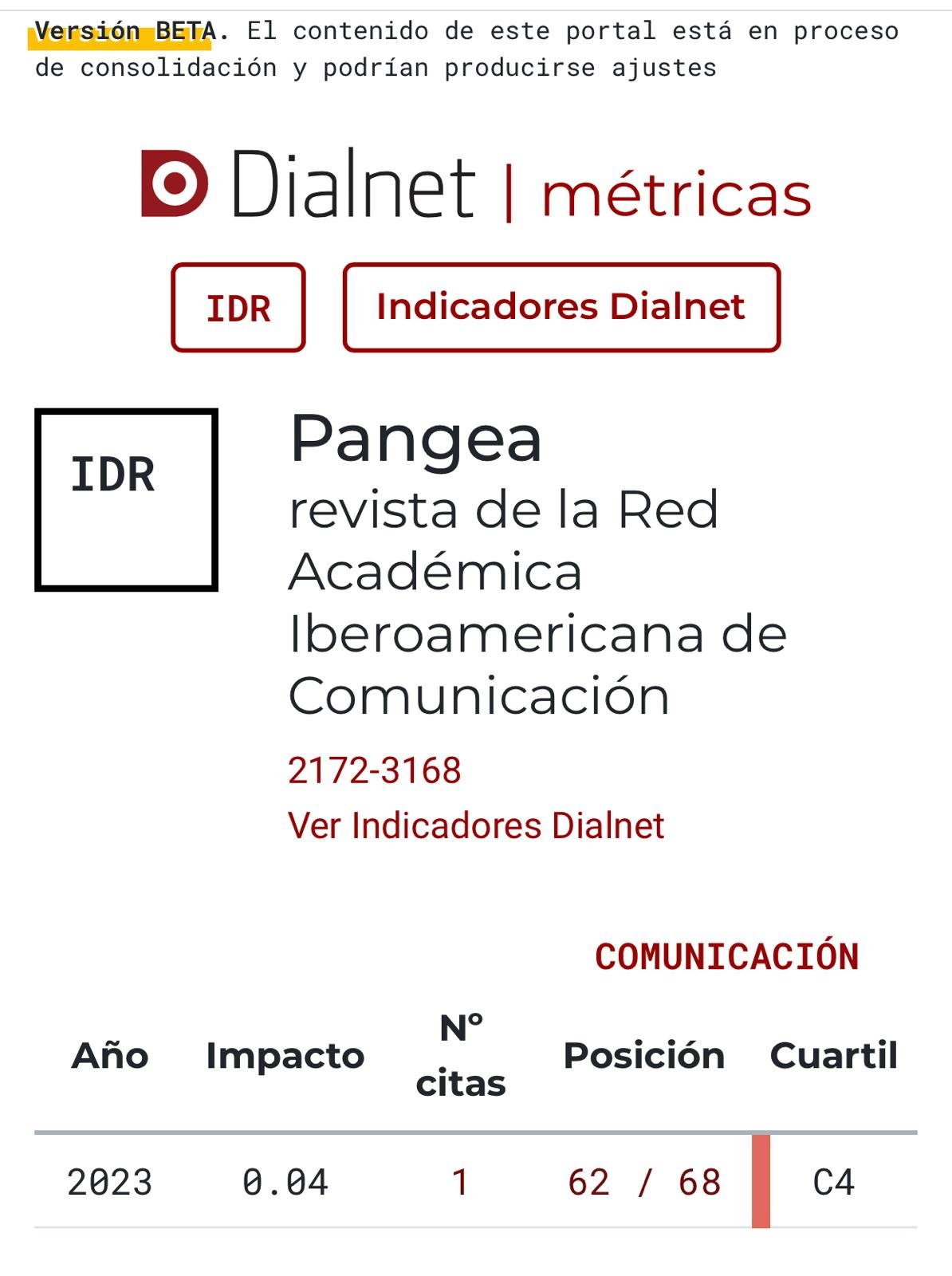Vicios Pautados: la atracción por lo prohibido y la efectividad de la censura publicitaria
DOI:
https://doi.org/10.52203/pangea.v14i1.177Palabras clave:
Redes sociales, Adolescentes, Tabaco, Líderes de opinión, Promoci´ón, ProhibiciónResumen
El artículo presenta un estudio sobre la forma en que la exposición a productos adictivos (en especial; el tabaco), en redes sociales destruye los avances en la disminución de consumo, por parte de jóvenes, alcanzada tras la prohibición de publicidades de tabacaleras llevada a cabo en el 2005 por la OMS. La investigación buscará entender si la efectividad de la censura publicitaria (aplicada en el 2005 hacia las tabacaleras) se encuentra comprometida, tras la utilización de las redes sociales; para establecer un vínculo más cercano con los consumidores actuales y potenciales.
Referencias
Abrams, Z. (2022). Largest ever study of tobacco content on social media links exposure to tobacco use.
Allem, J. P. (2022). Association Between Exposure to Tobacco Content on Social Media and Tobacco Use: A Systematic Review and Meta-analysis.
American Society of Addiction Medicine. (2011). Public Policy Statement. Definition of Addiction.
Bano, S. (2019). The Impact of Social Media on Learning Behavior for Sustainable Education.
Cawley, J. (2008). The Economics Of Health Behaviours (International Library of Critical Writings in Economics).
Chatterjee, S. (2020).Why do small and medium enterprises use social media marketing and what is the impact.
Connolly, B. (2020). Digital Trust: Social Media Strategies to Increase Trust and Engage Customers.
Hornik, R. (2019). The Relationship Between Exogenous Exposure to “The Real Cost” Anti- Smoking Campaign and Campaign-Targeted Beliefs.
Lee, K. & Chen, Y. (2021). Using social media images as data in social science research. Chotpitayasunondh V. & Douglas M. (2018). The effects of "phubbing" on social interaction en Hens G. (2019). Nicotine: A Love Story Up in Smoke.
Mcdonald, J. (2015). Pinterest Marketing Workbook.
Merton, R. & Lazarsfeld, P. (1948) Collaboration on Communication. Jones N. (2020). From Social Media to Social Ministry.
Milov, S. (2019). The Cigarette: A Political History.
Oxford. (2020). Nicotine and Tabaco Investigation.
Serrano Santoya, A. & Martínez, E. (2003). La brecha digital: mitos y realidades Godin S. (2018). This Is Marketing: You Can't Be Seen Until You Learn to See.
Substance Abuse and Mental Health Services Administration. (2016). Results from the 2016 National Survey on Drug Use and Health.
Swar, B. & Hameed, T. (2017). Fear of Missing out, Social Media Engagement, Smartphone Addiction and Distraction: Moderating Role of Self-Help Mobile Apps-based Interventions in the Youth.
Tateno, M. (2019). Internet Addiction, Smartphone Addiction, and Hikikomori Trait in Japanese YoungmAdult: Social Isolation and Social Network.
Twenge, J. M. & Campbell, W.K. (2019). Media Use Is Linked to Lower Psychological Well- Being: Evidence from Three Datasets.
Wasserman, S. & Faus, S. (2013). Análisis de redes sociales. Métodos y aplicaciones.
WHO. (2017). Report on the global tobacco epidemic: Monitoring tobacco use and prevention policies.
Descargas
Publicado
Número
Sección
Licencia
Derechos de autor 2023 Matias Pampaloni

Esta obra está bajo una licencia internacional Creative Commons Atribución-NoComercial-SinDerivadas 4.0.
https://creativecommons.org/licenses/by-nc-nd/4.0/deed.es





